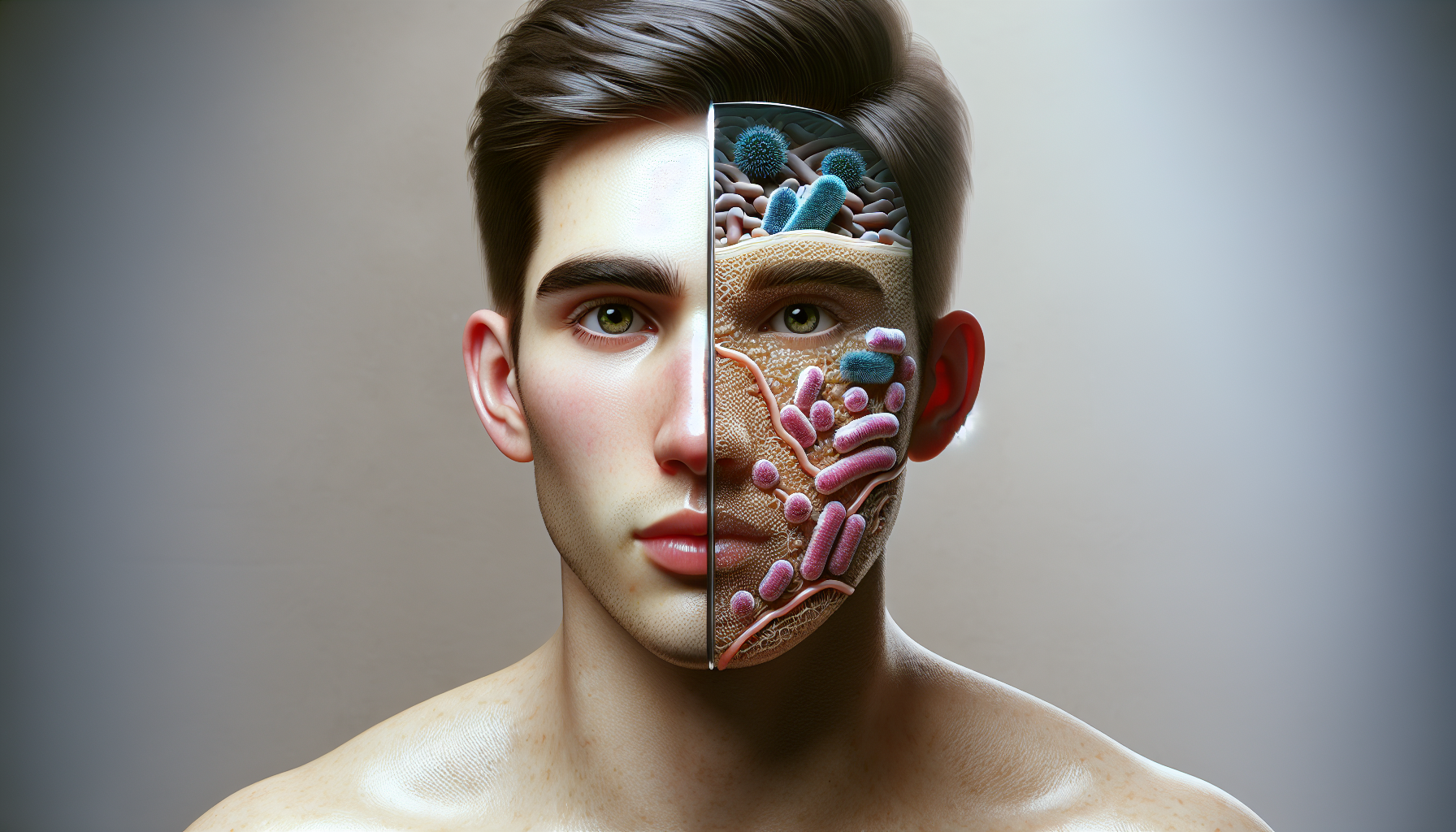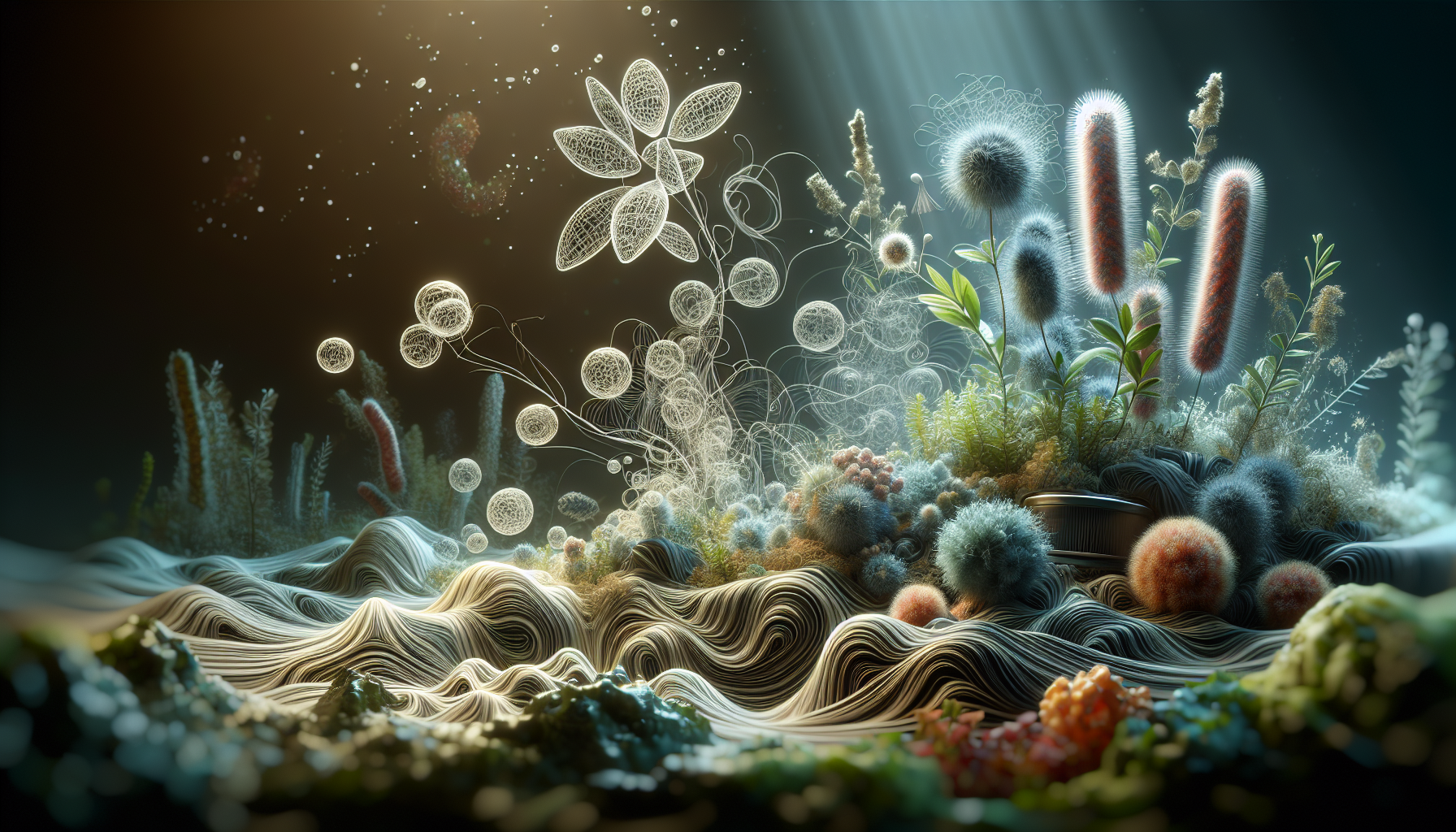In a world increasingly interconnected yet beautifully diverse, the human face stands as a universal canvas of expression and identity. It is said that the eyes are the windows to the soul, but what stories do our cheeks, forehead, and chin tell about us? For centuries, different cultures have believed that the face holds the key to understanding a person’s character, health, and destiny. This belief has given rise to the fascinating practice of face mapping, an ancient art and science that seeks to unlock the secrets hidden in our facial features. As we delve into the rich tapestry of cultural perspectives on face mapping, we embark on a journey that is both intriguing and enlightening, revealing how various societies interpret the language of the face and what it might mean for us today. 🌏
Face mapping is not a monolithic practice; it is a multifaceted tradition that varies significantly across the globe. From the intricate facial reading techniques of Traditional Chinese Medicine to the Ayurvedic interpretations in India, and even the nuanced art of physiognomy in the Western world, each culture offers a unique lens through which to view the human visage. These practices, steeped in history and tradition, provide a compelling narrative about how humans have always sought to connect the inner workings of the mind and body with external appearances. In this article, we will explore the origins and methodologies of these cultural practices, examining how they converge and diverge in their interpretations of facial features. We will also consider the modern resurgence of interest in face mapping and its implications in contemporary wellness and self-awareness.
As we peel back the layers of face mapping traditions, we will uncover the symbolic meanings ascribed to various facial features and how these interpretations can influence perceptions of identity and fate. Is there truth in the belief that our foreheads hold insights into our intellectual capabilities or that the contours of our lips reveal emotional tendencies? By engaging with experts in the field, studying historical texts, and analyzing current trends, this article seeks to offer a comprehensive understanding of face mapping that transcends cultural boundaries. Join us as we unlock the secrets etched into our faces, celebrating the diversity of human interpretation while pondering the universal quest to know ourselves better. Prepare to see the face—not just as a mirror of the self, but as a map that connects us to a world of ancient wisdom and cultural richness. 🌟
Understanding Face Mapping: A Historical Overview
Face mapping, also known as face reading or physiognomy, is an ancient practice that has been used across cultures to interpret the human face as a reflection of personality, health, and destiny. The art of face mapping is not merely about identifying facial features but understanding what they signify. This practice is rooted in various cultural traditions and has evolved over centuries, adapting to contemporary knowledge and beliefs.
Originating from ancient China and India, face mapping was initially used as a diagnostic tool in traditional medicine. Practitioners believed that the face is a map of the body’s organs and that blemishes or marks could indicate underlying health issues. In China, this was integrated into Traditional Chinese Medicine (TCM), where each part of the face is associated with a specific organ, such as the forehead with the heart and the cheeks with the lungs. Similarly, in Ayurvedic medicine, the face is divided into zones that correspond to the body’s chakras, providing insight into physical and emotional health.
Beyond health diagnostics, face mapping played a crucial role in social and cultural contexts. In ancient Greece, philosophers like Aristotle explored the concept of physiognomy, asserting that one’s appearance could reflect their character and moral disposition. This idea permeated through the Renaissance and into modern Western culture, although it often veered into pseudo-scientific territory.
Today, face mapping continues to be popular in various forms, from its use in dermatology and aesthetics to personal development and self-awareness practices. It serves as a bridge between ancient wisdom and modern science, offering a holistic view of the human face as a window to one’s inner world.
The Science Behind Face Mapping: Does It Hold Up?
As face mapping transitions from its mystical origins to modern-day applications, a critical question arises: does the science back it up? While traditional beliefs provide a fascinating framework, contemporary research seeks to understand the extent to which facial features correlate with personality and health.
Recent studies in dermatology and psychology have explored the link between facial features and genetic predispositions to certain health conditions. For instance, research has shown that skin conditions such as acne can be exacerbated by stress, diet, and hormonal imbalances, which may manifest in specific areas of the face. This aligns with face mapping theories that associate different facial zones with various organ systems.
In the field of psychology, the idea that facial expressions can reveal emotional states is well-documented. Micro-expressions, those fleeting facial movements that occur involuntarily, are powerful indicators of a person’s true feelings. This concept has been popularized in media and literature, illustrating how face mapping can be a tool for understanding human behavior and communication.
However, it is crucial to note the limitations of face mapping from a scientific perspective. While there is some empirical evidence supporting the relationship between facial features and health, much of face mapping remains speculative. Critics argue that without rigorous scientific validation, face mapping should be approached with caution and viewed as a complementary tool rather than a definitive diagnostic method.
Comparative Analysis: Traditional vs. Modern Perspectives
| Aspect | Traditional Face Mapping | Modern Face Mapping |
|---|---|---|
| Purpose | Diagnostic tool in medicine, personal insight | Health and psychological analysis, aesthetic assessments |
| Methodology | Observation of facial zones | Scientific research, technological aids |
| Validation | Cultural beliefs and practices | Empirical studies, clinical trials |
| Application | Traditional medicine, fortune telling | Dermatology, psychology, self-improvement |
Face Mapping in Cultural Contexts: A Global Exploration
The practice of face mapping is not monolithic; it varies widely across different cultures, each bringing its unique interpretations and methodologies. By examining these cultural perspectives, we can gain a deeper appreciation for the art of face reading and its significance in human societies.
In Traditional Chinese Medicine, face mapping is an integral diagnostic tool. The face is divided into multiple zones, each linked to specific organs and elements. Practitioners believe that imbalances or ailments in these organs manifest as changes in the corresponding facial areas. For example, redness on the cheeks may indicate lung issues, while forehead acne could be related to heart health.
In contrast, Indian Ayurveda associates facial zones with the body’s chakras, energy centers that influence physical and emotional well-being. The face is viewed as a reflection of one’s spiritual health, and face mapping is used to identify blockages in energy flow that may lead to health problems or emotional distress.
The Western perspective on face mapping, while less spiritual, is equally diverse. In contemporary Western practices, face mapping often intersects with dermatology and psychology. Skin care professionals use it to tailor treatments based on facial analysis, while psychologists may utilize facial cues to understand emotional states and personality traits.
The Role of Technology in Modern Face Mapping
In recent years, technological advancements have transformed the practice of face mapping, allowing for more precise and scientific applications. With the rise of AI and machine learning, facial recognition technology has become a powerful tool in various fields, from security to healthcare.
For example, AI-driven dermatology apps analyze facial images to detect skin conditions and recommend personalized treatments. These applications utilize vast datasets and sophisticated algorithms to identify patterns and correlations that human practitioners might overlook. While not a replacement for professional medical advice, these tools offer convenient and accessible options for skincare management.
Similarly, in the realm of psychology, technology aids in the analysis of facial expressions and micro-expressions, providing insights into emotional well-being and interpersonal communication. Such advancements demonstrate the potential of face mapping as a bridge between traditional practices and modern science.
Face Mapping in Practice: Real-Life Applications
While face mapping has ancient roots, its practical applications have evolved significantly, finding relevance in diverse domains. From health diagnostics to personal development, the practice offers valuable insights into our lives.
In the beauty industry, face mapping is used to customize skincare routines. Estheticians and dermatologists analyze facial zones to address specific skin concerns, ensuring that treatments target the underlying causes of issues like acne, dryness, or sensitivity. This personalized approach not only enhances efficacy but also promotes holistic skin health.
Beyond aesthetics, face mapping plays a role in mental and emotional wellness. Practitioners of face reading believe that facial features can reflect personality traits and emotional patterns. By understanding these aspects, individuals can gain self-awareness and work towards personal growth. This practice, known as face reading, is often employed in coaching and counseling to foster deeper self-understanding.
- Use face mapping to tailor your skincare routine.
- Observe your facial expressions to gain emotional insights.
- Explore cultural face mapping practices for holistic health understanding.
Additional Resources
For those interested in exploring face mapping further, numerous online resources and videos are available. One such video that provides a comprehensive overview of face mapping is “The Secrets of Face Mapping Explained” by the channel Wellness Munch. You can watch it here.

Conclusion
In conclusion, the exploration of face mapping and its cultural interpretations offers a profound insight into how different societies perceive facial features and their meanings. Throughout this article, we’ve delved into the historical context of face mapping, examining its origins in ancient cultures such as Traditional Chinese Medicine and Ayurveda. These practices have long viewed the face as a reflection of one’s inner health and emotional well-being, a perspective that continues to intrigue and inform modern holistic health approaches.
We also explored contemporary scientific perspectives, which often draw from psychological and physiological studies. The field of facial recognition technology, for instance, underscores how facial features are used in identifying individuals and understanding human emotions. This dual approach—merging ancient wisdom with modern science—highlights the complexity and multifaceted nature of face mapping.
Furthermore, cultural interpretations of facial features have revealed a rich tapestry of beliefs and traditions. In some cultures, facial features are believed to indicate personality traits, destiny, or even social status. These cultural narratives provide a lens through which we can appreciate the diversity of human expression and the varied ways in which we assign meaning to the human face.
Reinforcing the importance of this topic, face mapping extends beyond mere curiosity. It is a bridge between health, culture, and technology, offering practical applications in areas such as dermatology, psychology, and even criminal justice. Understanding face mapping can improve personal health diagnostics and enhance cross-cultural communication by fostering empathy and appreciation for different perspectives.
As we advance in a world increasingly interconnected yet distinct in cultural expressions, acknowledging and respecting these diverse interpretations can enhance our global interactions. By doing so, we can foster a more inclusive world where differences are not merely tolerated but celebrated.
We encourage you, the reader, to reflect on the insights gained from this exploration. Consider how these concepts might apply to your own experiences and perceptions. Are there aspects of face mapping that resonate with you personally or professionally? How might this understanding influence your interactions with others?
We invite you to share your thoughts and experiences in the comments below. Engaging in this dialogue not only enriches your understanding but also contributes to a broader conversation about the intersections of health, culture, and technology.
Moreover, sharing this article with others can spark discussions that further explore these intriguing concepts. Whether in academic circles, professional settings, or casual conversations, spreading awareness about face mapping can foster a deeper appreciation for the complexities of human expression.
Inspire others by applying what you’ve learned here in your daily life. Be it through fostering more mindful interpersonal interactions or integrating holistic approaches into personal health practices, the potential applications are vast and meaningful.
Let us collectively unlock the secrets of face mapping, appreciating the wisdom it offers and the connections it can forge across cultural divides. 🌍😊
For further reading and exploration, consider visiting these active resources:
1. Traditional Chinese Medicine and Face Mapping – An overview of how facial features are interpreted in TCM.
2. Facial Recognition Technology and Its Implications – Insights into how modern technology uses facial features.
3. Cultural Perspectives on Facial Features – A deep dive into various cultural interpretations of the human face.
We hope this journey through the world of face mapping has been enlightening and that you leave inspired to explore these concepts further in your own life.
Toni Santos is a visual explorer and microscopic storyteller who delves into the hidden aesthetics of microbial life. Through a fusion of scientific curiosity and artistic insight, Toni transforms the overlooked world of bacteria, fungi, and cellular forms into mesmerizing visual narratives—revealing the elegance, symmetry, and chaos that thrive at microscopic scales.
Rooted in a fascination with life forms too small to see yet too intricate to ignore, Toni’s work captures the bizarre beauty of microbial colonies, biofilms, and spore patterns. These images aren’t just representations—they are celebrations of the artistic intelligence encoded in nature’s tiniest architects.
With a background in visual design and bio-inspiration, Toni merges scientific imaging techniques with creative expression, transforming petri dish cultures, fluorescence microscopy, and microbial textures into works that provoke both wonder and contemplation.
As the creative force behind Vizovex, Toni offers curated visual studies, microbial-inspired designs, and essays that bridge art and microbiology—inviting viewers to reimagine what beauty means at the edge of perception.
His work is a tribute to:
The hidden geometries of living systems
The surprising elegance of microbial growth
The role of micro-life in shaping visual culture
Whether you’re a scientist, artist, or simply curious about the unseen world that sustains us, Toni opens a window into a universe where life writes poetry in colonies and patterns, one microbe, one frame, one breathtaking detail at a time.





